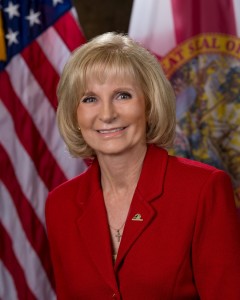Commissioner Murman quoted in this Tampa Tribune article on transportation:
Politics
Hillsborough transportation tax plan going public in September
By Mike Salinero | Tribune Staff
Published: August 12, 2014 | Updated: August 13, 2014 at 05:58 AM
TAMPA — If you don’t know a lot about Hillsborough County’s big plans for transportation improvements, you’ll get plenty of chances to find out more next month.
Starting after Labor Day, local government leaders will hold a series of meetings in all corners of the 1,000-square-mile county. The purpose of the gatherings will be to get feedback from the public on a long list of road, trail and mass transit projects. The list has been 14 months in the making.
County Administrator Mike Merrill, speaking Tuesday to the county’s transportation policy leadership group, said the purpose of the meetings will not be to “sell’ the project list, but to ask residents, civic and business groups to critique it and suggest changes.
Merrill said the outreach program, which will include a social media blitz, will last through mid-October. Then the results will be brought back to the policy leadership group, which consists of the seven county commissioners, the mayors of Hillsborough’s three cities, and the chairman of the HART bus system.
“What we’re really talking about is bringing it back to you in October and letting you know what we’ve heard,” Merrill said.
Depending on what county officials hear in the public meetings, the leadership group may pare down the projects list or add some new roads and transit routes.
At some point late this year, or in early 2015, the leadership group will decide whether to hold a referendum in 2016 to raise the sales tax by a penny. If it passes, the tax hike would produce $6 billion over 30 years for transportation.
The emphasis on public outreach is an outgrowth of lessons learned from the failed sales tax referendum in 2010. Proponents of that effort felt that large portions of the county were left out of planning when transportation projects were developed and the residents were unclear about how the tax would benefit them.
“In 2010, everything was not crystal clear; it was real muddy,” county Commissioner Les Miller said Tuesday. “If we don’t make it clear, we’re doomed to failure.”
The board approved Merrill’s suggestion to hire a consultant with transportation experience to help with the public information program and in crafting the campaign to win passage of the referendum.
They also agreed to delay a controversial decision to replace all the HART citizen board members with elected officials. Merrill, with support from the leadership group, had argued that HART should be enlarged to handle all mass transit projects if the tax hike passes.
If this comes to pass, he said, the board handling the money needs to be accountable to the public.
But the proposal met with resistance from the HART board and from some in the public who saw it as a power grab by the county commission. Commissioners, surprised by the push-back, decided the HART governance discussion was a distraction from the main mission: selling the transportation plan to the public and passing a tax to finance it.
“We’re moving from a governance conversation to a mobility conversation,” Commissioner Sandy Murman said, signaling an end to the HART board conversation.
Though the board voted unanimously to go forward with the public information campaign and to hire the consultant, there was some dissension. Plant City Mayor Rick Lott cautioned against showing the public specific road projects or bus routes during the information campaign because it would lead to questions about “why this is happening and why this is not happening.”
“I think it’s very dangerous when you go out to the public and you have lines on a map,” Lott said.
Tampa Mayor Bob Buckhorn disagreed, arguing that the sales tax referendum will only be successful if voters know how the tax will benefit them in terms of specific intersection improvements, road widening or new bus routes.
Buckhorn cited the success of The Better Jacksonville Plan, which voters in that north Florida city approved in 2000. The plan raised the sales tax by half a cent to finance $2.25 billion in construction projects, resurfacing of existing roads and construction of new ones.
“The people in that community knew, literally down to their street, what the benefit was to them directly, because the plan was that specific,” Buckhorn said. “I think that specificity needs to be there when they go to the ballot box.”
Commissioner Victor Crist said he was concerned there wouldn’t be enough money to pay for all the projects on the list, even with the sales tax increase.
Crist said voters in his north-county district are likely to balk at the high costs of the projects and vote down the tax.
“I’m not sure we have enough time to sell this,” Crist said, “and I’m not sure we have enough time to do the leg work that needs to be done to generate the voter buy-in … to get this passed.”
But Buckhorn, who once spoke of holding the referendum next year, dismissed any talk of delay. He used one of his familiar sports analogies to drive the point home.
To a chorus of laughter, he said, “We’re suited up, we’ve been training, we’re ready to go, we want to hit somebody, but we’ve got to have a game.”
msalinero@tampatrib.com
